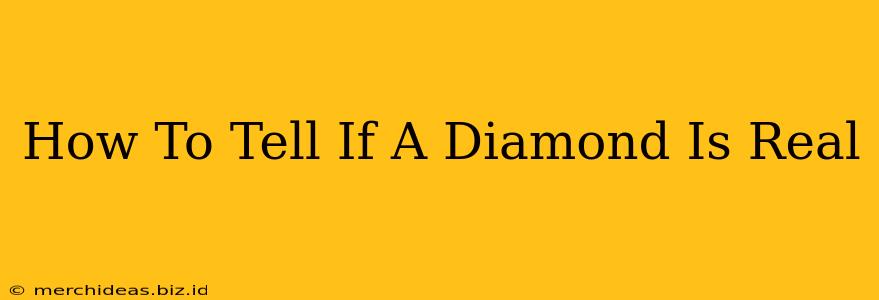Buying a diamond, whether it's a dazzling engagement ring or a stunning necklace, is a significant investment. Knowing how to tell if a diamond is real is crucial to protect yourself from fraud and ensure you're getting what you pay for. This guide provides you with several reliable methods to verify the authenticity of your diamond, from simple at-home tests to professional assessments.
At-Home Tests to Check Diamond Authenticity
While these methods aren't foolproof for identifying lab-grown diamonds or high-quality simulants, they're a great starting point for weeding out obvious fakes.
1. The Fog Test
This is a quick and easy test. Gently breathe on the diamond. If it fogs up and the fog dissipates quickly, it's likely a real diamond. Cubic zirconia and other imitations will retain the fog for a longer period. Why? Diamonds dissipate heat much faster than their imitations.
2. The Water Test
This is another popular method. Fill a glass with water and drop the diamond in. A real diamond will sink to the bottom, while many imitations will float. Why? Diamonds have a higher density than most imitations. However, some high-density simulants might still sink, so this isn't a definitive test.
3. The Magnification Test
Examine the diamond closely with a 10x jeweler's loupe. Real diamonds often have tiny inclusions (internal flaws) and blemishes. The presence of these imperfections is a good indicator of authenticity. Perfectly flawless stones should raise a red flag. Why? Perfectly flawless diamonds are extremely rare and usually incredibly expensive.
4. The Light Test
Examine the diamond's brilliance and sparkle. Real diamonds possess a unique fiery brilliance and sparkle, dispersing light in a distinctive way. Hold the diamond up to a light source and observe how it reflects and refracts light. Imitations often lack this exceptional brilliance and sparkle. Why? This is due to diamond's unique refractive index.
Professional Diamond Authentication
For definitive proof, professional verification is the best option.
1. Gemological Laboratory Certification
A reputable gemological laboratory, such as the GIA (Gemological Institute of America) or AGS (American Gem Society), will provide a detailed certificate outlining the diamond's characteristics, including its carat weight, cut, clarity, and color (the 4Cs). This certificate is the gold standard for diamond authentication.
2. Consult a Reputable Jeweler
Experienced jewelers possess the knowledge and tools to assess a diamond's authenticity. They can perform various tests, including using a diamond tester, which measures the thermal conductivity of the stone. This is a highly effective method for distinguishing diamonds from simulants.
Understanding Lab-Grown Diamonds
It's important to note that lab-grown diamonds are chemically, physically, and optically identical to mined diamonds. The at-home tests described above may not effectively distinguish between them. However, lab-grown diamonds will usually lack the certificate of authenticity from a reputable gemological laboratory.
Keywords for improved SEO:
- How to tell if a diamond is real
- Real diamond vs fake
- Diamond authenticity test
- Identify real diamonds
- Is my diamond real?
- Diamond testing at home
- How to check diamond authenticity
- Diamond certification
- GIA diamond certificate
- AGS diamond certificate
- Lab-grown diamonds vs mined diamonds
By combining these at-home tests with professional assessment, you can confidently determine if your diamond is the real deal. Remember that a combination of methods provides the most reliable results.
